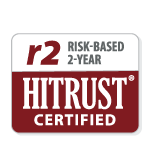In an effort to improve the patient experience, the healthcare industry is implementing new regulations and expectations regarding price transparency. As part of the new requirements, the Centers for Medicare and Medicaid Services’ (CMS) Price Transparency Final Rule will require hospitals operating in the U.S. to establish, update, and make public a list of their standard charges for provided items and services. The intent is to give consumers the information they need to make informed decisions about their healthcare.
The Affordable Care Act (ACA) introduced this transparency concept in 2010 with the intent to increase market competition and drive down the cost of healthcare services to make them more affordable for all patients. The healthcare industry has been delaying the model’s implementation, and while these attempts continue, time is running out—and facilities must be prepared to release a list of charges.
Here’s what you need to know about transparency expectations in 2021 and beyond:
- Hospitals will have to publish their payer-specific negotiated rates for 300 “shoppable services” and the hospital’s standard charges online.
- Beyond the charges mentioned above, facilities must also publish the gross charge, the discounted cash price, and the de-identified minimum and maximum negotiated charge.
- Charges must be published in two ways: in a comprehensive, machine-readable file and in a consumer-friendly display of common “shoppable” services. The consumer-friendly display is derived from the machine-readable file, making it simply a shorter version of the more detailed document.
- Of the 300 shoppable services, CMS has identified 70 that must be included. The other 230 services can be selected by the hospital. Examples of these services are hip or knee replacements, cardiac catheterizations, etc. CPT/HCPCS will be used to compile the list, and Medicare’s Standard Analytical File is a reliable and valuable dataset to use as hospitals comply.
To prepare for this transition, hospitals should take time to focus on their pricing strategies before they publish their charges list. Do you set prices based on market averages, a multiple of cost, markup over Medicare, or a combination of all three? It’s important to look at this closely before the rule takes place. Importing the entire Charge Description Master (CDM), all revenue for a specific time period, and all payer fee schedules will give you a clear picture as you build a roadmap for the future.
The ambiguity in CMS’s Final Rule increases the responsibility of hospitals to determine what standard charges and shoppable services should be published. This makes the task exceptionally more complex, requiring more time and resources from staff members who are already stretched too thin. As a result, many facilities will enlist the help of a vendor to collect and evaluate data.

%20(1).png?width=116&height=115&name=Best%20in%20KLAS_2024_116x115%20(002)%20(1).png)
%20(1).png?width=116&name=Best%20in%20KLAS_2024_116x115%20(002)%20(1).png)
